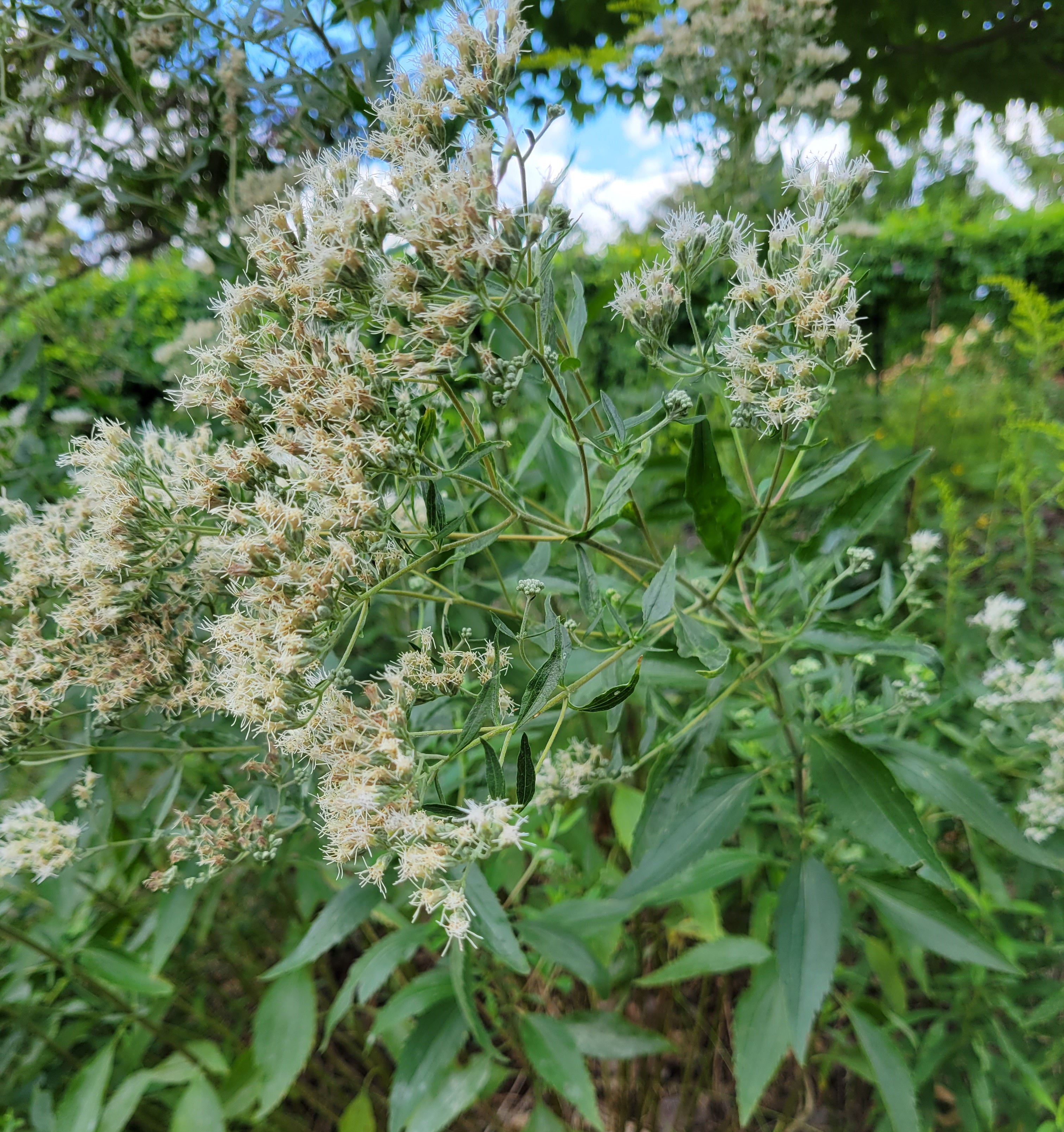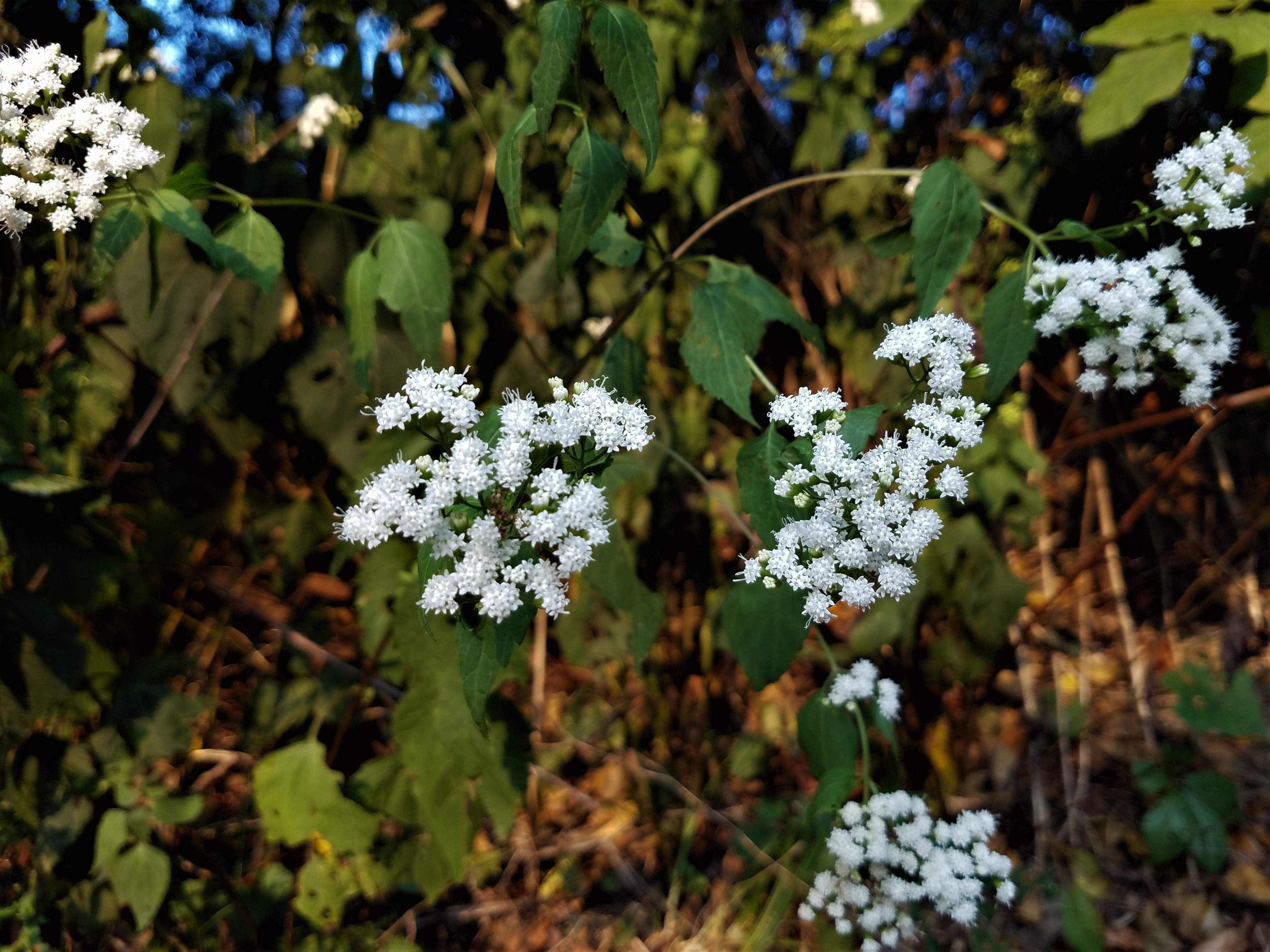Blog

#bioPGH Blog: White Snakeroot or Late Boneset?
 A resource of Biophilia: Pittsburgh, #bioPGH is a weekly blog and social media series that aims to encourage both children and adults to reconnect with nature and enjoy what each of our distinctive seasons has to offer.
A resource of Biophilia: Pittsburgh, #bioPGH is a weekly blog and social media series that aims to encourage both children and adults to reconnect with nature and enjoy what each of our distinctive seasons has to offer.
Late summer flowers are already beginning to bloom! The goldenrod and the New England asters pop distinctively, but if you're like me, it can be easy to mix up two similar-looking flowers this time of year: late boneset and white snakeroot. Let's see if we can shore up some differences, shall we?
Late Boneset

Late boneset (Eupatorium serotinum), also known as late thoroughwort, is fall-blooming aster that you have probably already seen this year along roadsides or perhaps meadows or pastures. Their tiny individual flowers are all disk florets; they don’t have ray florets like what appears to be the “petal” of a coneflower. They bloom in a similar time frame as white snakeroot (August-September), but boneset has distinctively elongated leaves. Like other late-season flowers, they are in important food source for a variety of pollinators.
White Snakeroot

White snakeroot (Ageratina altissima) is also a member of the Asteraceae family. Like late boneset, white snakeroots don’t have ray florets, just disk florets. As the season progresses, the little white flowers will appear more “fluffy” late in the bloom, but each teeny bit of fluff is actually an achene, the same kind of dry, fluffy seeds as a dandelion. The flowers may look similar to late bonesets, but two plants can be easily distinguished by their leaves and, to some extent, height. Snakeroot’s leaves are shaped like long, rounded triangles in contrast to boneset. There is some overlap in height, but late boneset can grow 3-6 feet tall while white snakeroot tends to be 2-4 feet tall.
Now, I can’t quite let this plant go without telling its story. White snakeroot is also the infamous as the culprit behind “milk sickness,” a significant issue in the Midwest during European settler expansion of the nineteenth century. Shortly after drinking milk in late summer, victims would begin trembling and experience intense gastrointestinal distress and often death — and it was noted that the livestock of a person suffering from this milk sickness often had “the tremors” as well. The first documented description of milk sickness appeared in 1809, but in the 1830s, with the guidance of the Shawnee, Illinois doctor Anna Hobbs Bixby learned that cows and livestock ingesting white snakeroot could pass on the toxins from the plant in their milk. However, as she was a woman living in a remote area in the nineteenth century, it was difficult for her to spread this knowledge too far beyond her own community or be taken seriously on a broader platform. In academic literature, credit is often given to a set of brothers who published the same conclusion nearly a century after her.
Whatever the blooms you see, don't miss out on the late summer flowers! This Saturday is supposed to be a lovely day, be sure to get out and explore!

